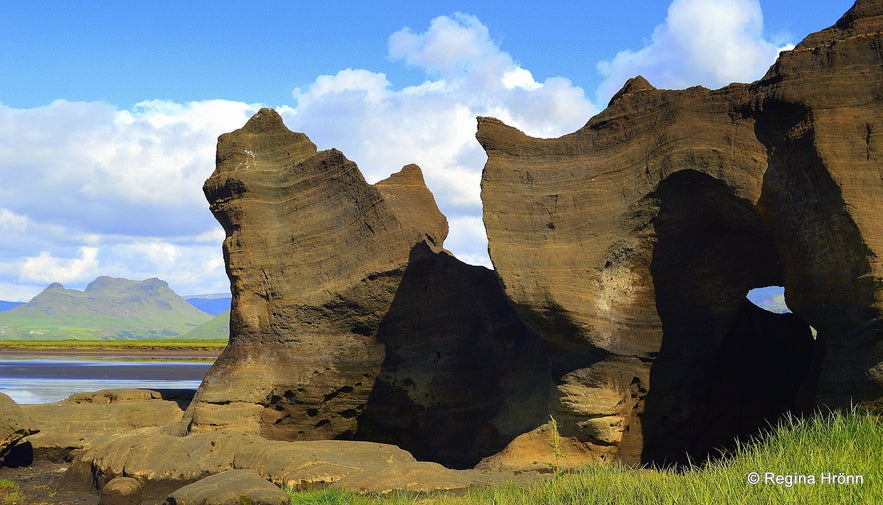
The Farmer at Reynistaður and the Elf who built the Reyniskirkja Church - Icelandic Folklore


In this travel-blog, I am going to show you Reyniskirkja church in South Iceland, where an elf supposedly built a church some 1,000 years ago.
The elves are a part of the hidden people of Iceland, with whom we live in peace and harmony, given that we show them respect and kindness. They only appear to us if they want us to see them.
Top photo: inside Reyniskirkja church 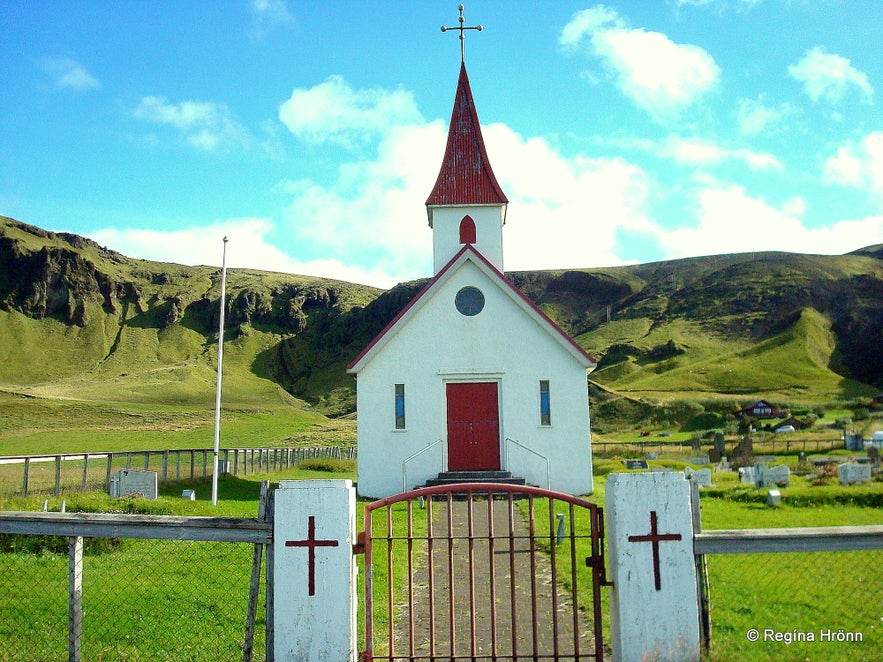
Reyniskirkja church, consecrated in May 1946 after 12 years from the beginning of the church building
Those of you who read my travel-blog know that I love folklore and elf stories. In my last two travel-blogs I showed you folklore which was supposed to have taken place in 2 churches.
Now, I am going to show you 2 stories about the same event which happened in the same church.
I found these stories in Þjóðsögur Jóns Árnasonar - the Collection of Folklore by Jón Árnason and translated them into English.
The first folklore is called Bóndinn á Reynistað og huldumaðurinn in Icelandic - The farmer at Reynistaður and the elf (a member of the Hidden people of Iceland) - and dates back to the Viking age in Iceland, a little before the Christianisation of Iceland in the year 1,000.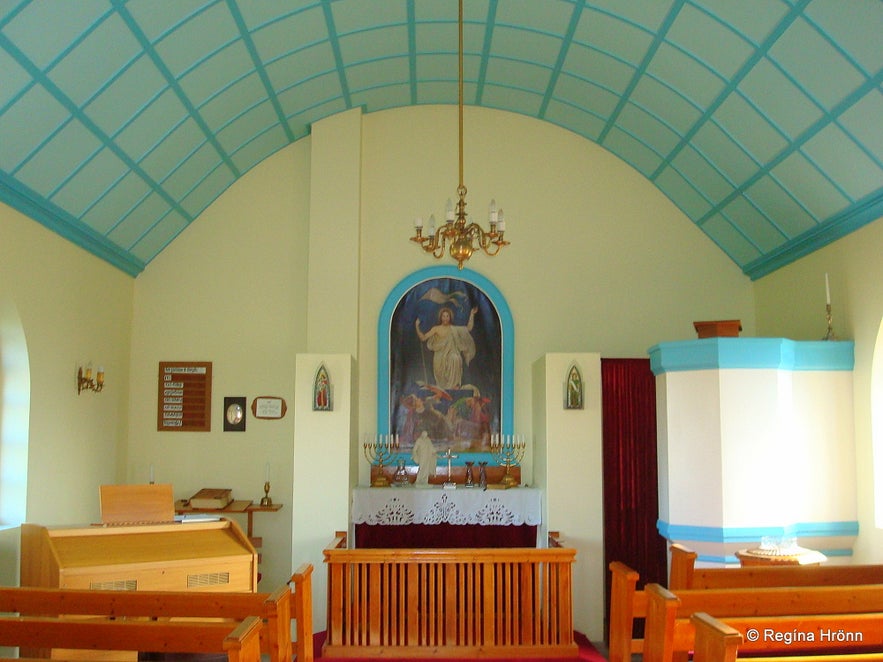
Inside Reyniskirkja church - it seats 200 people
There is another similar story in the same book, on pages 74-75, called Kirkjusmiðurinn á Reyni - The church builder at Reynir. I also translated it and you can read about it in the next chapter of this travel-blog.
I only have a couple of old photos from Reyniskirkja church, taken back in 2010. So I also include photos from the nearby Víkurkirka church and add a caption so you will see which is which.
I also add photos of the beautiful landscape in Reynishverfi and Reynisfjara black sand beach, which is one of Iceland's most famous and infamous beaches. And photos from other places in Iceland, like the hypothesis turf house and turf church in Þjórsárdalur valley.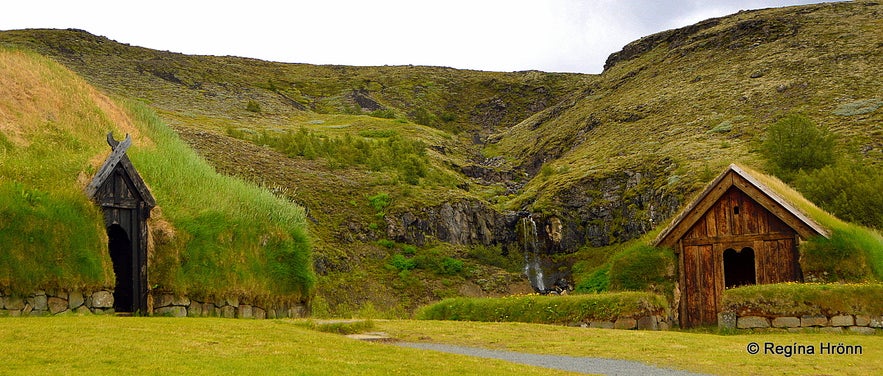
Hypothesis turf longhouse and church in Þjórsárdalur valley
Back when the story happened Icelanders lived in turf houses and the churches in Iceland were small turf churches, made with turf and rocks, and timber.
So the church in the story might have looked something like this hypothesis church in Þjórsárdalur valley, only with more timber I guess.
See also my travel-blog: Stöng - Ruins of a Real Viking Settlement Manor and the Reconstructed Saga-Age Farm in Iceland.
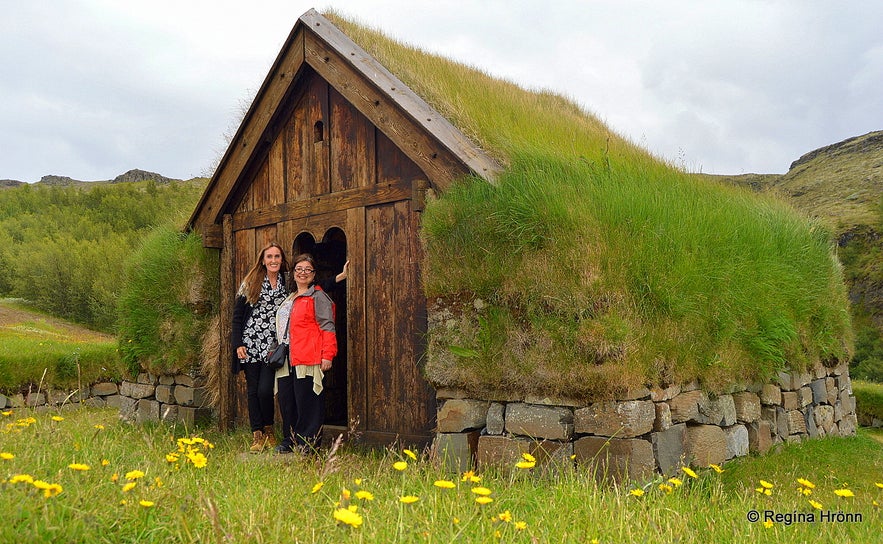
The hypothesis church at Þjóðveldisbærinn in Þjórsárdalur valley
The turf churches were very small back then, as I have shown you in my travel-blog about the pre-Christianity turf church at Ás in Hjaltadalur in North Iceland, chapter 7.
That church was built in 984, sixteen years prior to the Christianisation of Iceland. There are church ruins at Ás that show that the church was 12 m2.
So it would not take too long to build such churches, as you can read in the folklore.
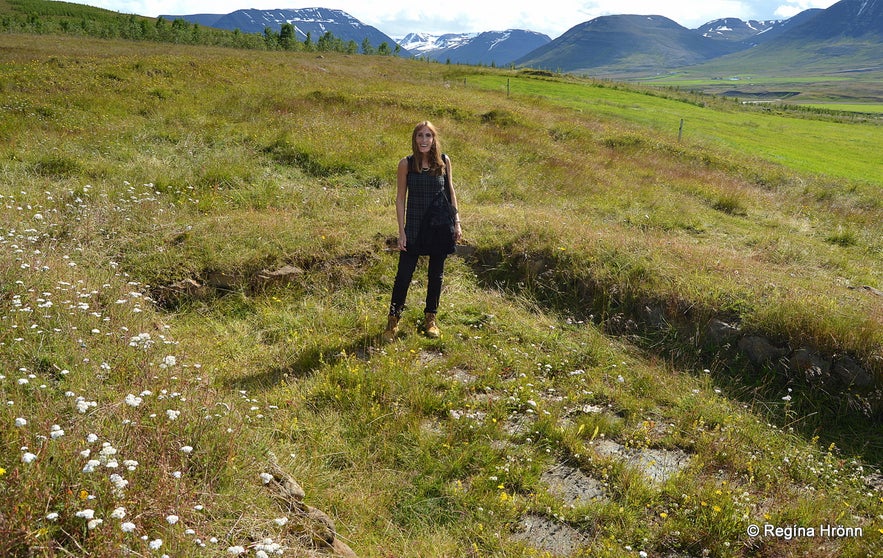
Ruins of a pre-Christian church in Hjaltadalur valley in North Iceland
Now, let's see what happened in the folklore which took place at Reynir in Reynishverfi in Mýrdalur in South Iceland - Þjóðsögur Jóns Árnasonar - the Collection of folklore by Jón Árnason -Volume III, page 75-77:
"Late during the reign of Earl Hákon in Norway (975–995), a young farmer lived at Reyni(staður) in Iceland.
The farmer wanted to build a longhouse on his farm and needed wood for the longhouse.
So he travelled to Norway in the summer when King Olav arrived in Norway. He had a late start and arrived in Norway in late autumn.
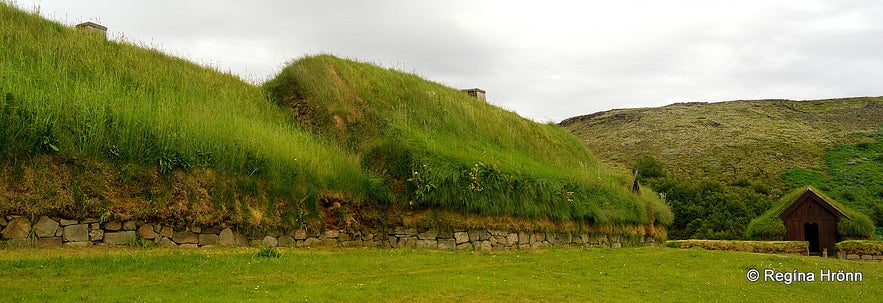
Þjóðveldisbærinn - a Commonwealth hypothesis longhouse in Þjórsárdalur
He then learned that Earl Hakon had died, but that Olav Tryggvason was now in power.
The farmer went to meet King Olav and asked to stay at his court for the following winter.
The king agreed and the farmer stayed with him for the winter and reverted to Christianity and got baptized.
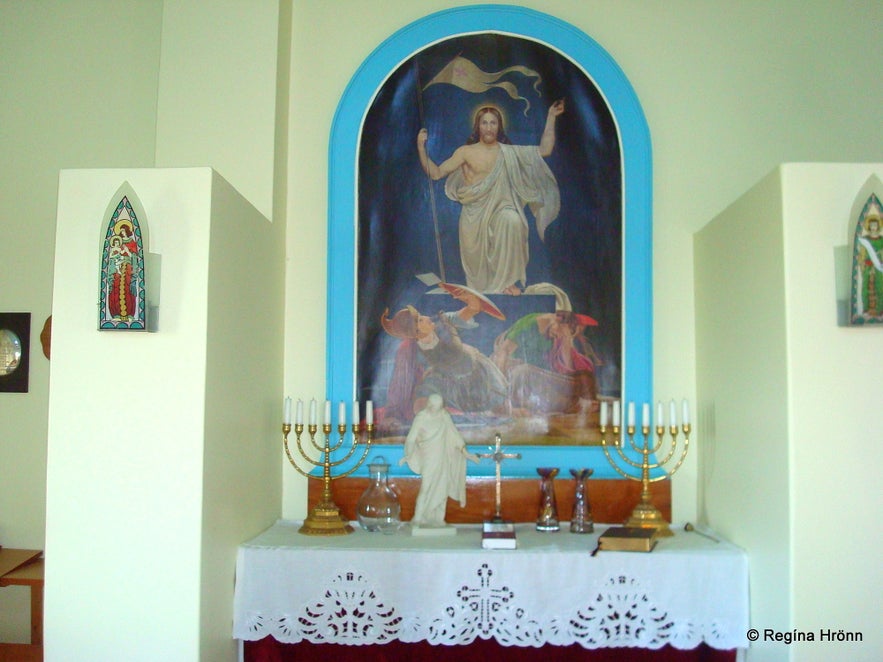
The altarpiece in Reyniskirkja is a copy of the altarpiece in Dómkirkja cathedral in Reykjavík
The following spring the farmer returned to Iceland and the king gave him wood for the longhouse and some wood for a church and told the farmer to build the church the following summer.
When the farmer returned to his home he got carpenters to build the longhouse.
When the longhouse was finished, he asked them to build the church.
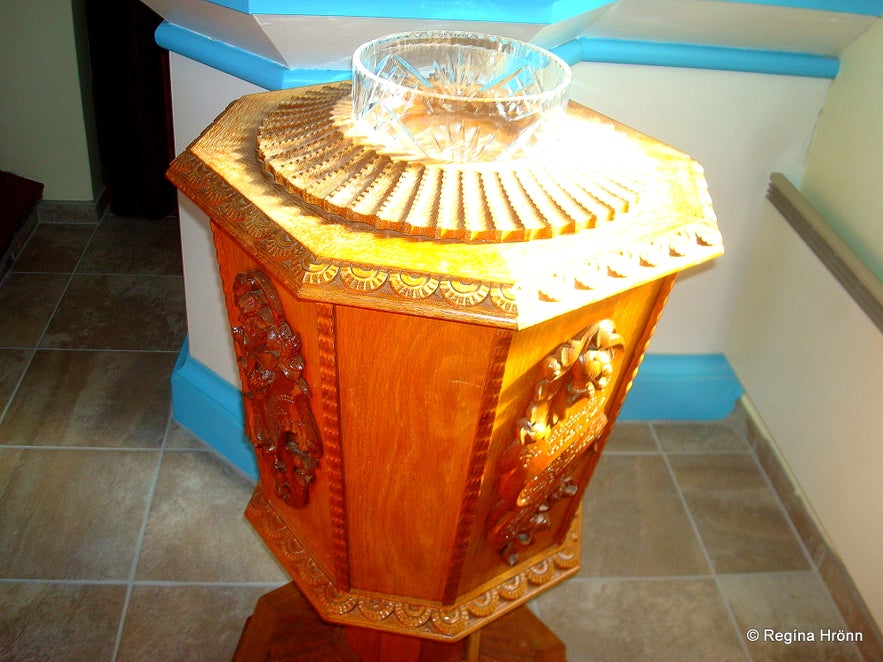
The baptismal font in Reyniskirkja church
But as the carpenters found out that they were to build a church they went home, and the farmer didn't get anybody to build the church as these men were all heathen.
The farmer received the news that a Norwegian carpenter, who was close to King Olav, was at Húsavík in North Iceland. The farmer decided on riding all the way to Húsavík to ask the carpenter to build the church.
But as he arrived in Húsavík the carpenter had left for Norway, so the farmer returned back home and was at a loss as to what he could do now.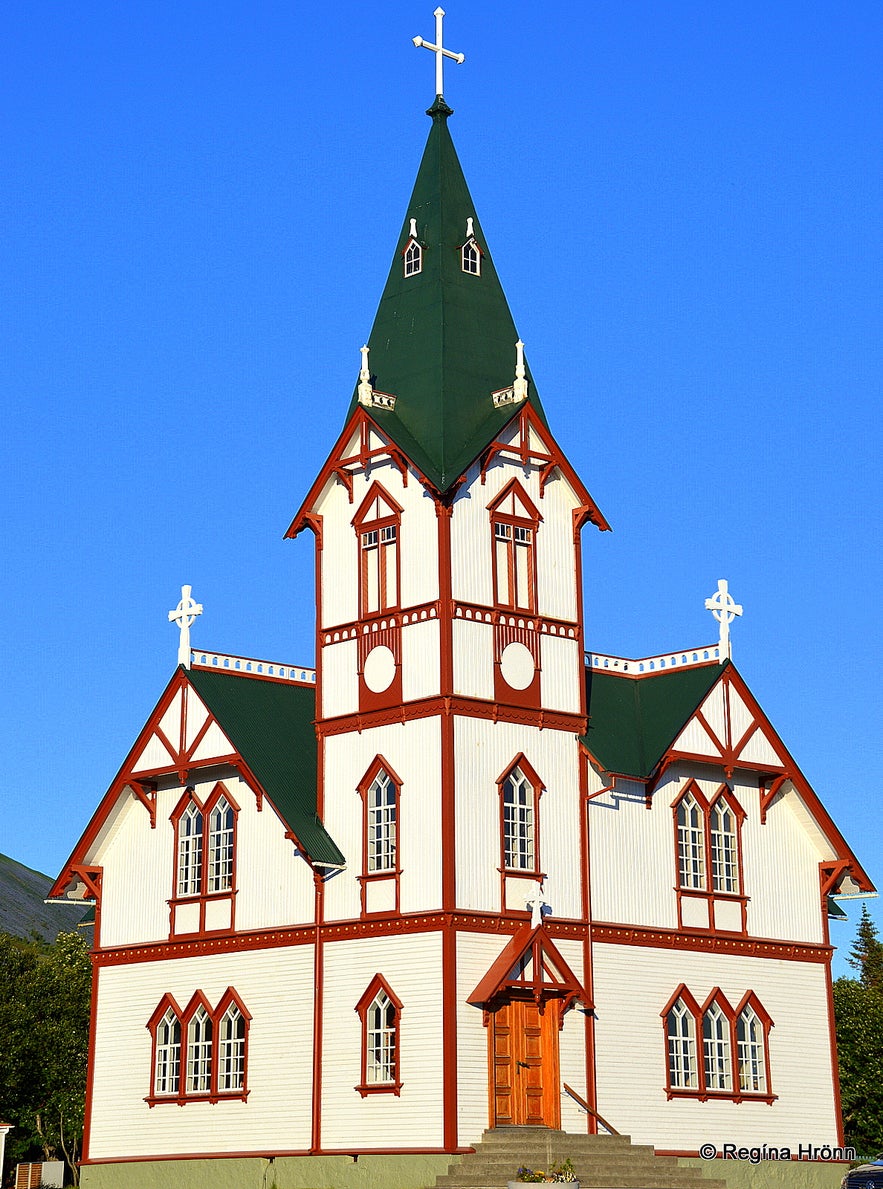
Húsavíkurkirkja church built in 1907
He was so worried that he could neither sleep nor eat, but wandered around and thought that he must have reverted to some faith of misfortune.
And the farmer decided on leaving this Christian faith and revert to the ancient Norse religion if he would not be successful in erecting the church.
See also the chapter on the Christianisation of Iceland in my travel-blog:
The Historic Goðafoss Waterfall in Skjálfandafljót River in North Iceland

Reynisfjara beach and the basalt columns
As the farmer was in deep thoughts a fully bearded stranger approached him.
The man greeted him and the farmer barely answered. The man asked the farmer why he was so sad, and the farmer told him all about his predicament.
"Shouldn't I build the church for you?", the stranger asked, and the farmer gladly accepted.
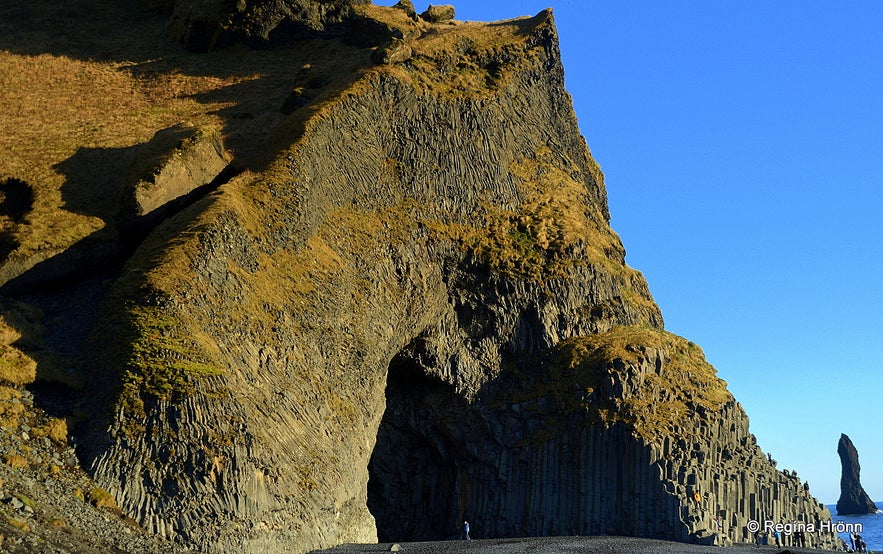
Hálsanefshellir cave in Reynishverfi
The farmer had a 3-year-old son. The stranger told him that he had a 2-year-old son and that his son was bored as he didn't have a boy his own age to play with.
As payment for building the church, I want to foster your son. (It was common back then that relatives or friends would foster children out of respect as many of the Icelandic Sagas tell us, but not complete strangers - RHR).
The farmer told him that he would not let him have his son.

The basalt columns at Reynisfjara beach
"He may come to see you whenever you want," the stranger said. But the farmer said that he would not give him his son.
The stranger then said: "I will give you another alternative. I shall build the church for you and if you will tell me my name before the construction of the church is finished; then I will not take your son".
The farmer told him that it was impossible to find out his name, as his name would be of a rare nature.
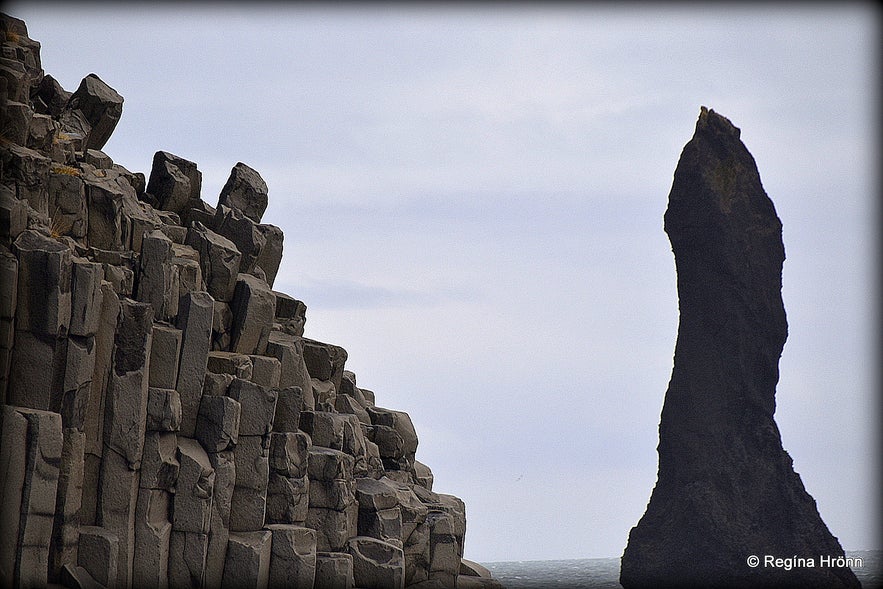
Basalt columns and Skessudrangur in Reynisfjara
"No", said the stranger, "my name is a common Icelandic name".
"It is a deal then," the farmer said.
The stranger agreed and planned on returning the next morning. The men departed ways and the farmer returned back home in a good mood, ate his dinner, and had a good night's sleep.

An old barrack in Reynishverfi
The next morning the stranger arrived and started building the church, and he worked hard on that day.
The farmer stayed inside and wrote down all the names he could think of and read them aloud for the carpenter that same night.
The carpenter answered: "None of these names is my name".
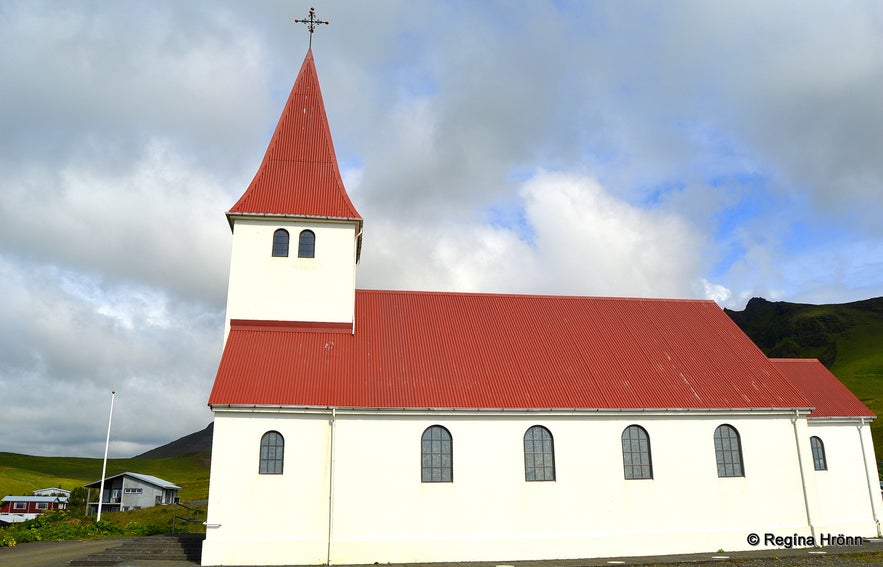
Víkurkirkja church on the other side of the mountain
On that first day, the carpenter had built the timberwork of the church and the walls.
The following day the farmer visited all his neighbours and asked them to write down all the male names they knew of.
They did as he asked, and the farmer read out a long list of names on that night to the carpenter.
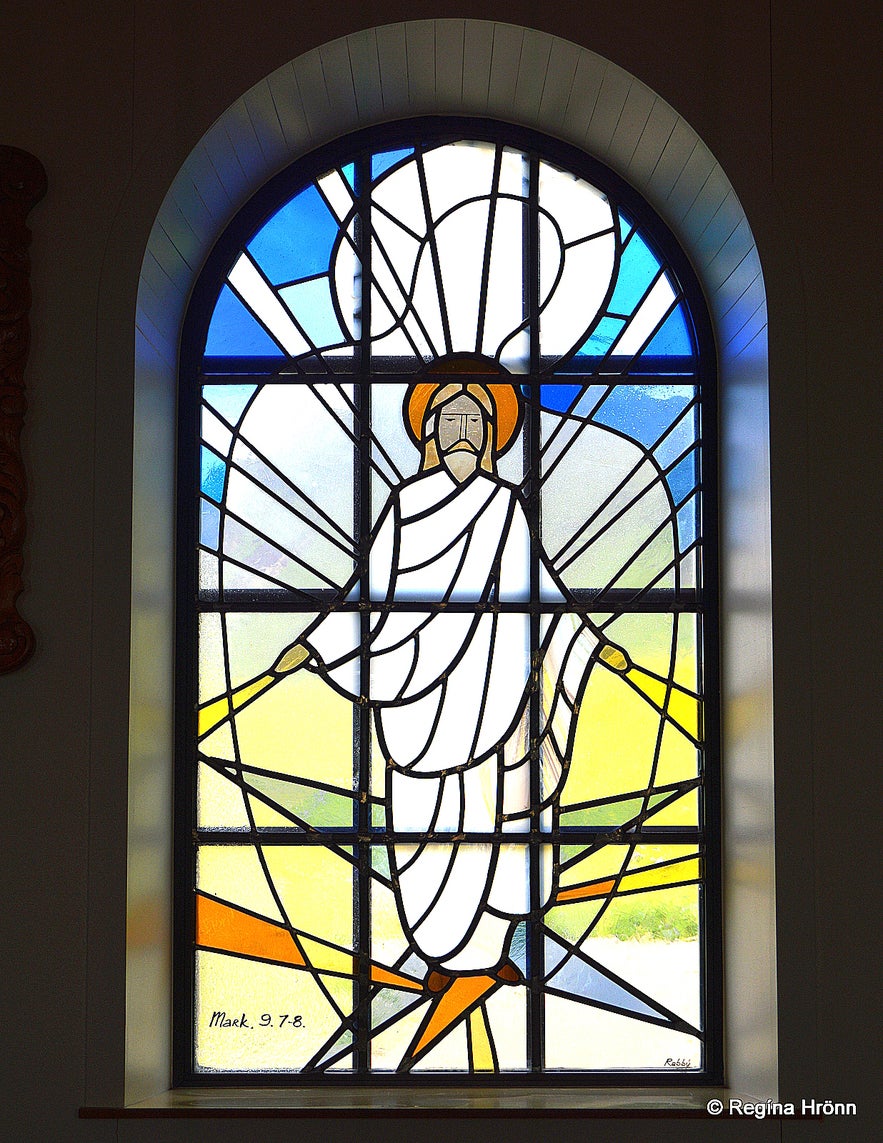
Beautiful Víkurkirkja church
The carpenter's answer was the same as yesterday: "None of these names is my name".
"You have betrayed me," the farmer said, "you don't have an Icelandic name".
The carpenter claimed that he had indeed told the truth.
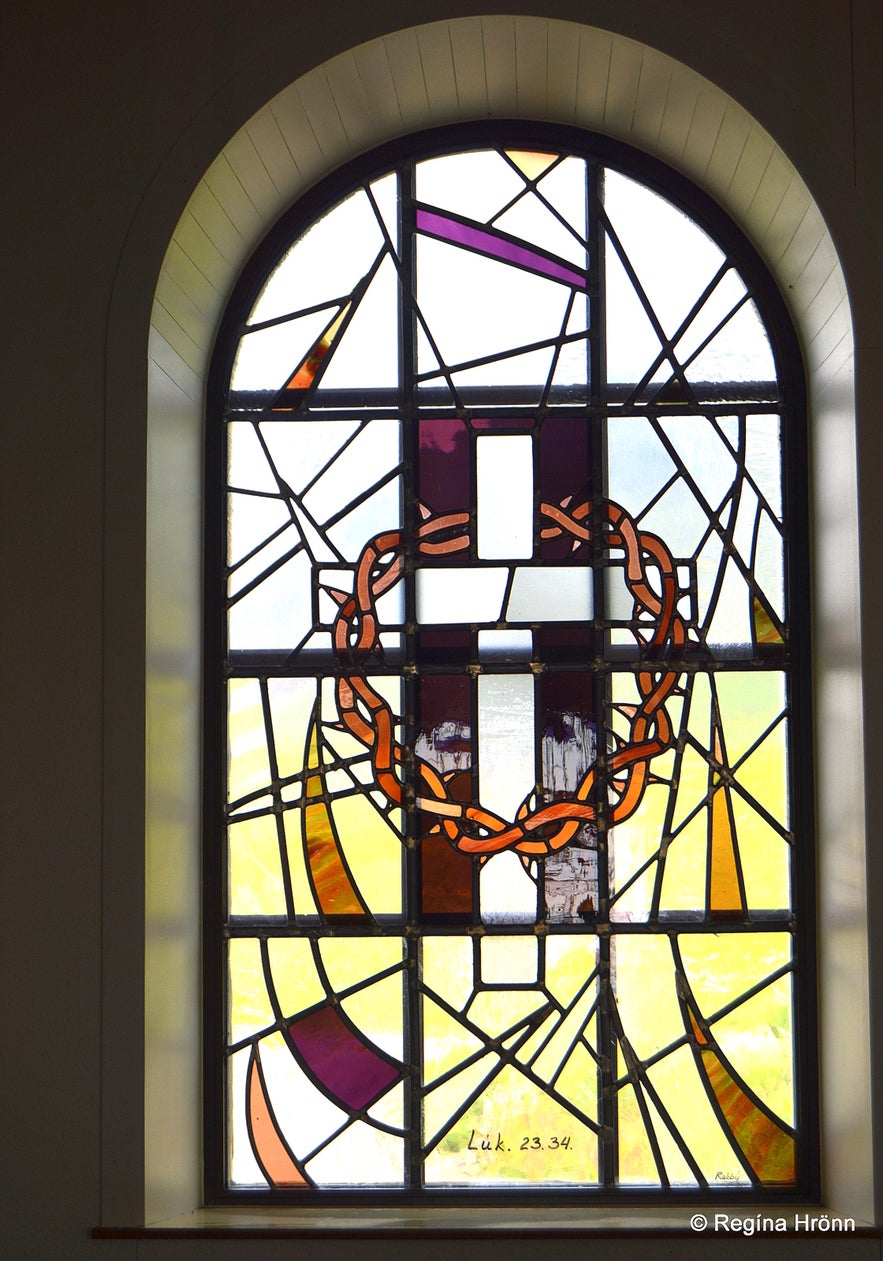
Beautiful stained glass windows in Víkurkirkja church by Hrafnhildur Ágústsdóttir
The farmer thought to himself that he was in worse trouble than before and the following day he wandered around in the field in deep thoughts and thought to himself that if the stranger were to take his son, then he would burn down the church and cast away this new faith and revert to his old heathen Viking faith.
The farmer didn't pay attention to where he was going and walked up to a rocky mound.
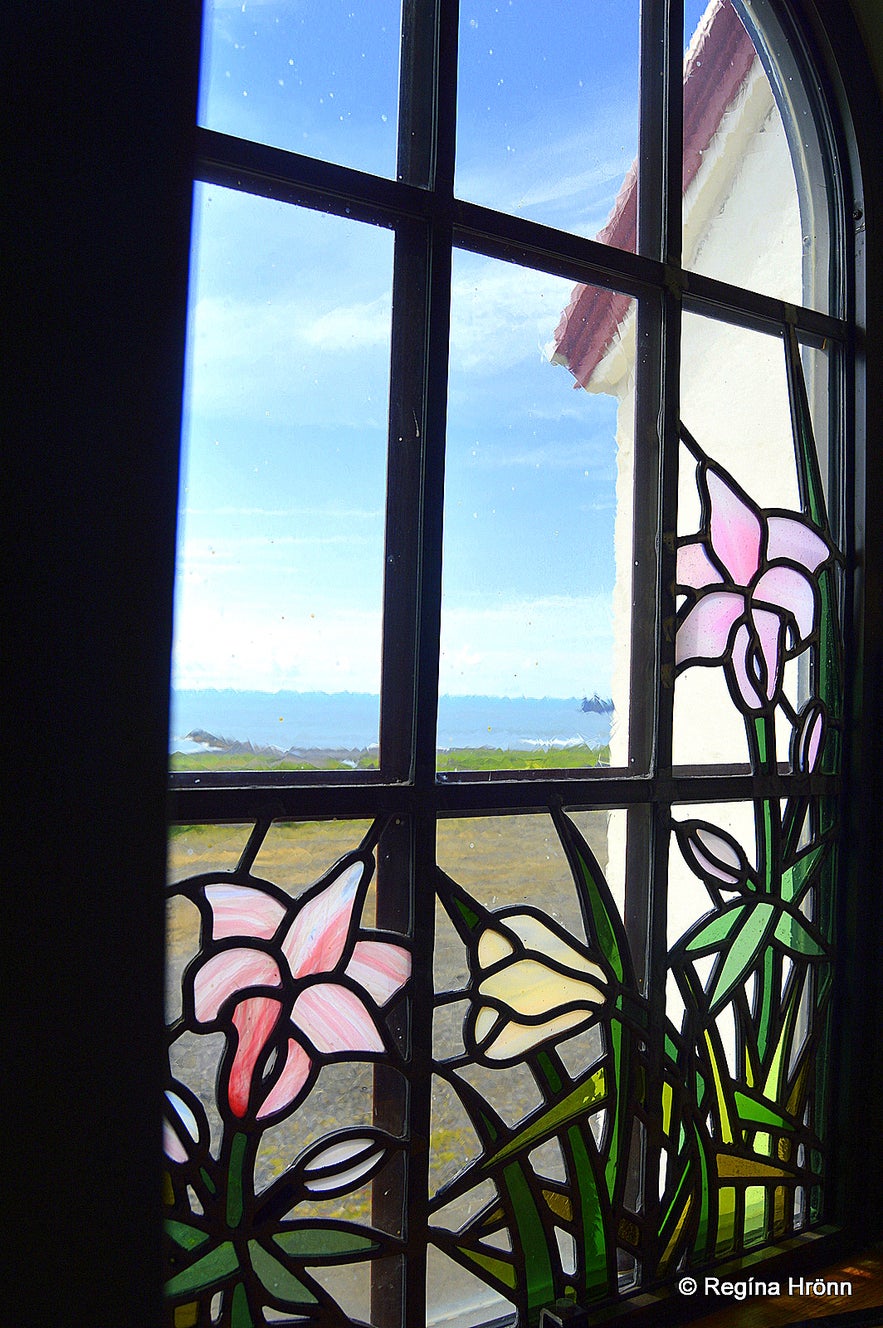
The view from Víkurkirkja church of Reynisdrangar sea cliffs on the other side of Mt. Reynisfjall
He heard that somebody was reciting a poem inside the mound.
He looked around and saw a window on the mound; inside he saw a woman sitting with a child in her arms.
She said:
"Þegi þú og þegi þú, drengur minn,
senn kemur Finnur faðir þinn frá Reyn
með þinn litla leiksvein".
Translated into English the poem goes like this:
Be quiet my son,
soon your father Finnur
will return from Reyn
with your little playmate."
The farmer thought to himself that he must remember this name, Finnur, and returned back home and went to the church.
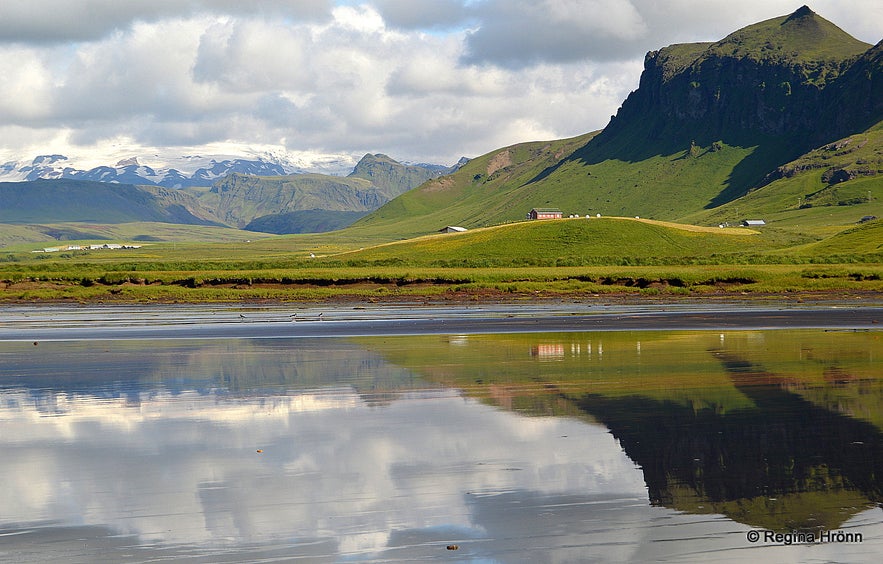
Hnjúkur and Reynishverfi
The church was finished and the carpenter was putting the last nail in a carved altarpiece, which he had carved himself.
The farmer walked toward him and said: "Vel gengur, Finnur minn - What a good job, Finnur".
The carpenter looked in his direction, threw away his axe, and disappeared never to return to get the farmer's son, but the farmer kept his faith and so did the other people on the farm."
(Translated into English from Þjóðsögur Jóns Árnasonar - the Collection of Folklore by Jón Árnason).

Hnjúkur and Mt. Reynisfjall
This happened before the Christianisation of Iceland in the year 1,000 when most Icelanders were heathen, but some were already Christians. So a church has stood at Reynir for a very long time.
Now I want to tell you the other story in Þjóðsögur Jóns Árnasonar - the Collection of Jón Árnason about the same event. It is shorter and different.
That story is called Kirkjusmiðurinn á Reyni - the Church builder at Reynir.
The church builder at Reynir - Kirkjusmiðurinn á Reyni 
Strange tuff formations at Hellnaskagi in Reynishverfi
"Prior to the Christianisation of Iceland, the farmer at Reynir in Mýrdalur wanted to build a church.
He had already got the wood but lacked a carpenter for the church building. Nowhere could he find a carpenter.
He heard of Norwegian church builders at Hólar in Hjaltadalur. So he rode to Alþingi (the parliament of Iceland at Þingvellir) in the hope of hiring them, but at the parliament, he heard that they had already sailed away.
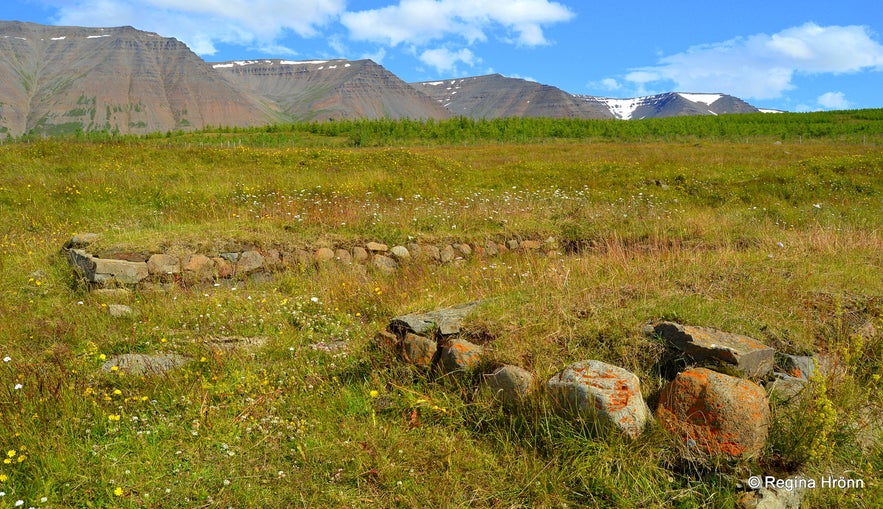
Pre-Christian church ruins in Hjaltadalur - were they building this church?
He was in deep thoughts as he needed to build the church.
One day a stranger approached him and asked him if he had succeeded in finding carpenters to build the church. The farmer replied that he was unsuccessful in finding carpenters.
The stranger offered to build the church for him. The farmer asked him his name; the stranger asked him to guess his name, and that he would ask for nothing in return for the church building other than the farmer would guess his name.
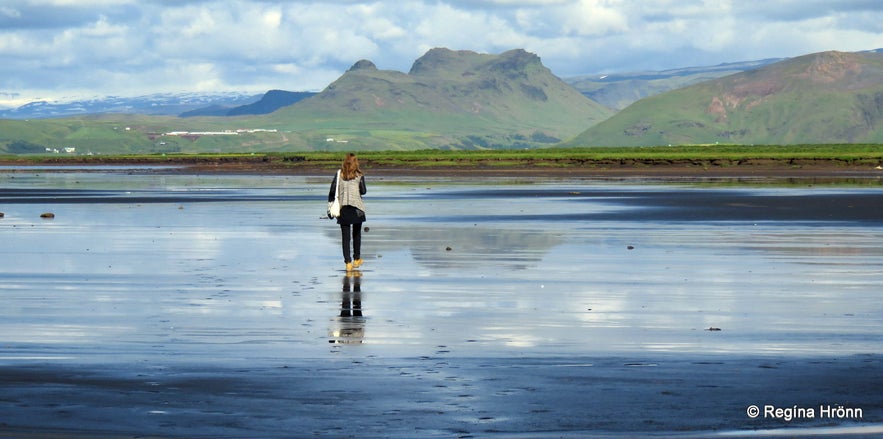
Walking on water in Reynishverfi and Dyrhólaós estuary
If he couldn't guess his name he would ask for his 5-year-old son as a payment for the church building. He had taken a liking to his son and wanted him very much.
He managed to persuade the farmer to risk accepting this deal.
The stranger started building the church and the church building progressed surprisingly well and fast.
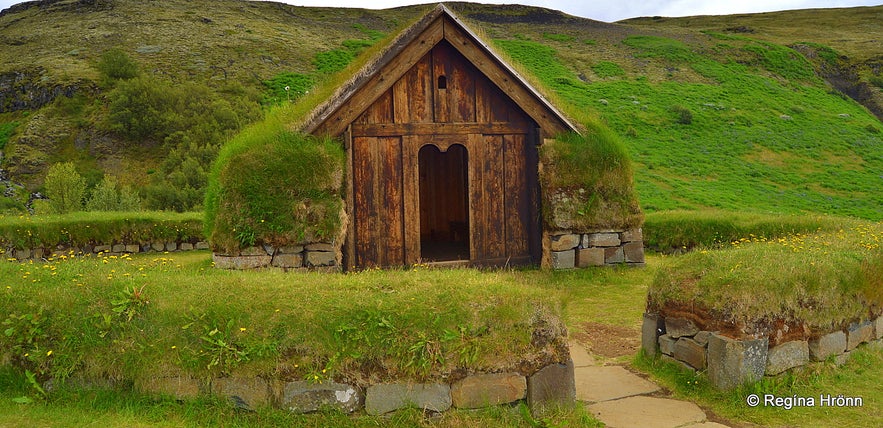
The hypothesis church in Þjórsárdalur valley
The farmer, with help, had all the known male names written down, as the carpenter had said that his name was pretty common.
During the church building, the farmer started guessing the carpenter's name but in vain. The farmer with the help of others started digging deeper for names but was unsuccessful.
He liked the carpenter's work, but he did not want to lose his own son.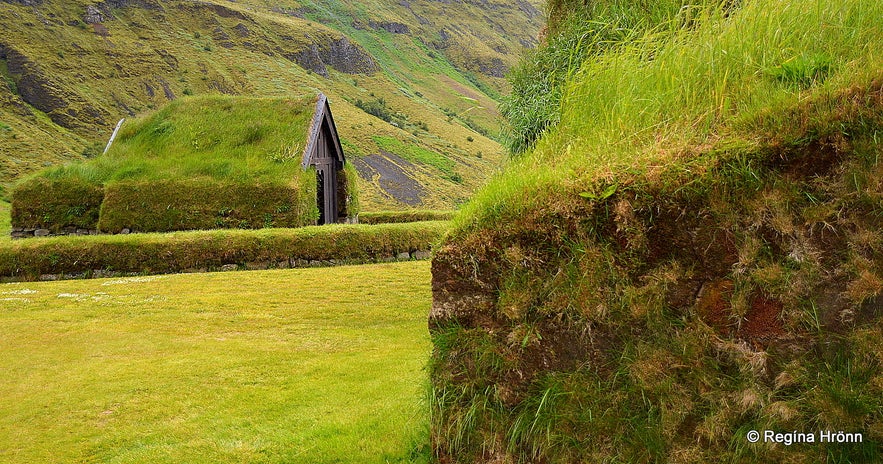
The hypothesis buildings in Þjórsárdalur valley
The church was built almost 60 fathoms down from the farm.
The farmer was miserable and wandered alone to a valley below Mt. Reynisfjall.
The valley was only a short distance above the farm, but the farm could not be seen from the valley.
He prayed to God and holy men to help him in his predicament. He then lay down and fell asleep.

Inside the hypothesis longhouse in Þjórsárdalur valley
The farmer then saw a small door open in a mound on the west side of the valley. He walked inside and saw a woman holding a child reciting a poem over and over again to her child:
"Vertu góður, drengur minn,
senn kemur hann Finnur, faðir þinn frá Reyn
með þinn litla leiksvein."
Translated into English the poem goes like this:
"Be good, my boy,
soon Finnur, your father will return from Reyn,
with your little playmate."
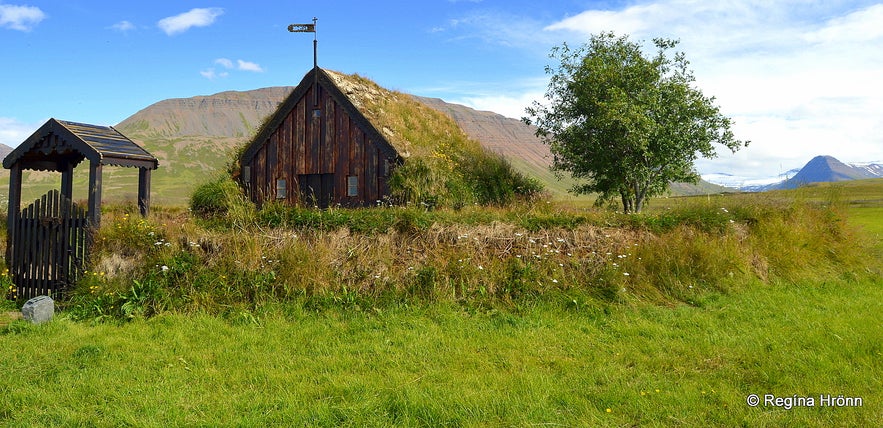
Grafarkirkja church in North Iceland - the oldest turf church in Iceland
Then the farmer woke up and remembered the dream. Neither he nor the others had remembered this name (Finnur).
The church was almost finished and the payment was due immediately if the farmer weren't successful in guessing the right name.
The farmer hurried to the church as the carpenter worked faster as the church building was almost finished.
The carpenter was about to fasten a bracket above the chancel doorway - it was the last work to be finished in the church.

Turf ruins in Reynishverfi
The farmer said: "Senn ertu búinn, Finnur minn - Soon you have finished, my Finnur."
The carpenter cursed the moment the farmer had uttered his name, didn't finish the bracket, and went away".
(Translated into English from Þjóðsögur Jóns Árnasonar - the Collection of Jón Árnason - Volume III - pages 74-75).
You can see from reading these 2 stories about the same event that they differ a bit. Icelandic folklore is filled with such stories about encounters with the hidden people of Iceland.
Víkurkirkja church
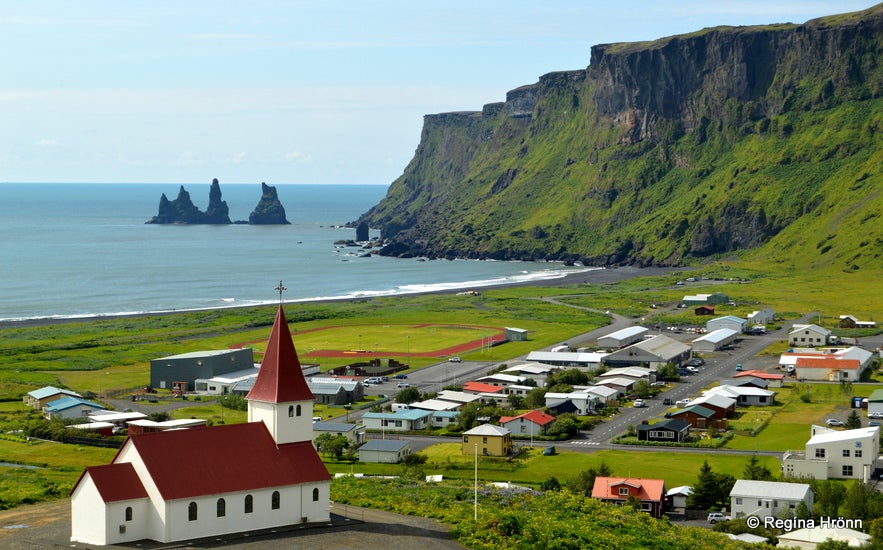
Víkurkirkja church on Skerið on the other side of Mt. Reynisfjall and Reynisdrangar sea stacks
The concrete Víkurkirkja church was consecrated in October 1934. It was designed by Guðjón Samúelsson, the State Architect of Iceland.
I am pretty sure that Víkurkirkja is one of the most photographed churches outside of Reykjavík. It is located on the top of a hill, with the most picturesque view.
And this beautiful church should be a safe place during catastrophic flooding if the subglacial volcano Katla were to erupt.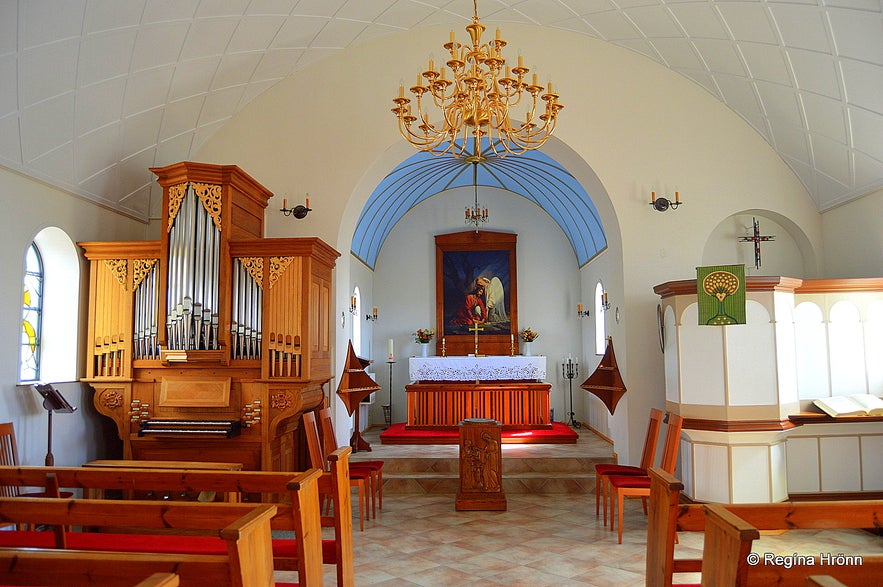
Víkurkirkja church
The reason for a new church being built at Vík was that it was difficult for the parishioners at Vík to travel across the mountain to attend mass at Reyniskirkja church.
It is still sometimes difficult to travel across the mountain pass today and it sometimes happens in the wintertime, that the pass is impassable.
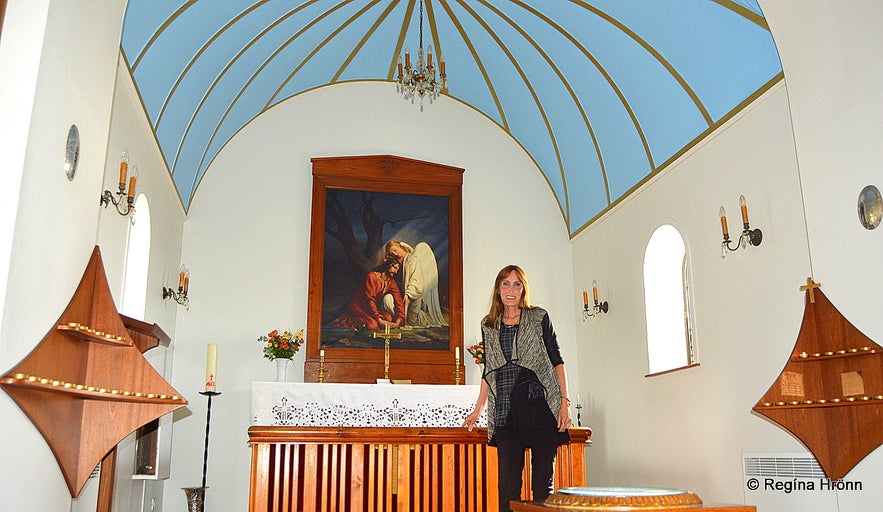
Inside Víkurkirkja church
Vík is a young village, so to speak, and only started forming around the turn of the last century (1900).
By 1920 the population of Vík had grown to approx. 200.
Reyniskirkja church had become dilapidated, and there were talks about joining these parishes, but a decision was made to erect a new church at Vík.
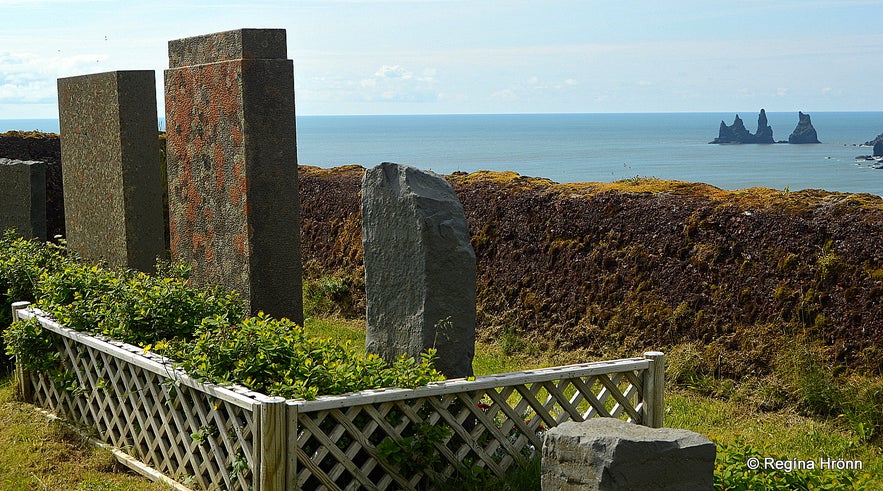
Víkurkirkjugarður graveyard and Reynisdrangar
The graveyard was by Reyniskirkja church.
A new graveyard was taken into use and the first person was buried there before the new concrete Víkurkirkja church was finished.
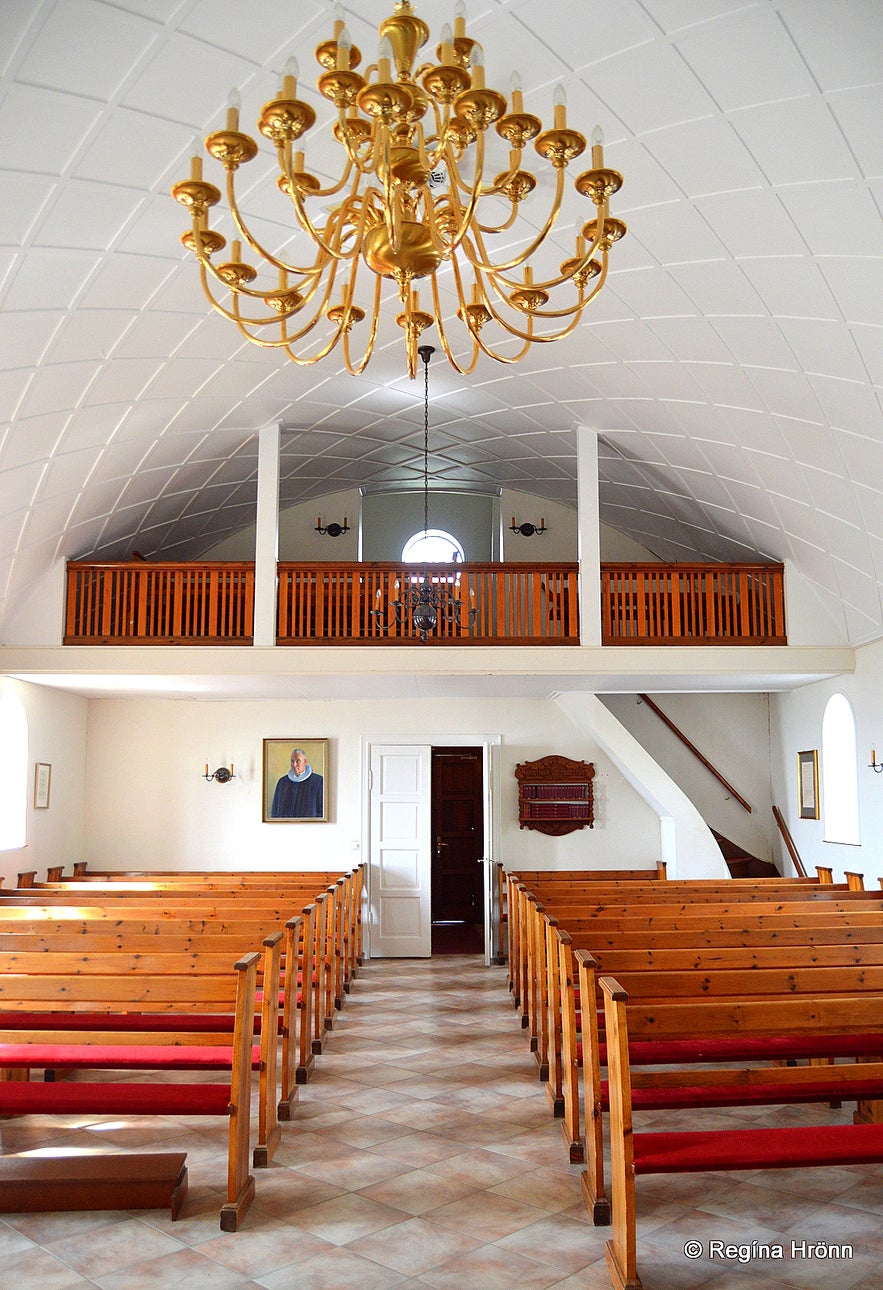
Víkurkirkja seats 200 people
When it was finished it seated 200 people, the whole population of Vík at that time, but in this parish were approx. 300 people.
And a new Reyniskirkja concrete church was consecrated in 1946. The church prior to the current Reyniskirkja church had been built in a more convenient location than before at Reynir (in dry soil) but an older church had become damaged partly because of dampness and rain in the Mýrdalur valley.
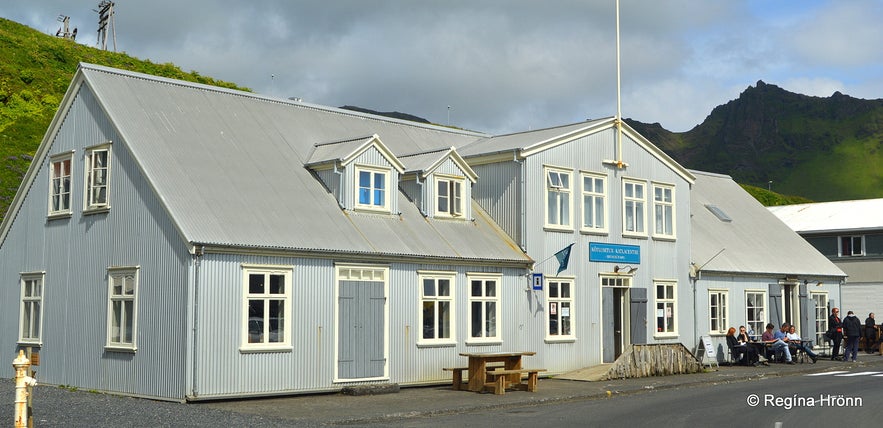
Brydebúð house in Vík dates back to 1895
In this parish, Víkurprestakall, there are now 4 churches besides Reyniskirkja and Víkurkirkja churches.
The other 4 churches are Skeiðflatarkirkja, Ásólfsskálakirkja, Eyvindarhólakirkja og Stóra-Dalskirkja. Then we have Skógarkirkja at Skógar and Sólheimakapella.
I have visited all these churches, and a hobby of mine is visiting and photographing the churches in Iceland.

An opening in the tuff in Reynishverfi
Reynishverfi and Reynisfjara beach are beautiful locations in Iceland and Garðar farm in Reynishverfi is the southernmost farm in Iceland.
By the abandoned farm Hellur, you will find Baðstofuhellir cave, and many more caves carved into the tuff.
In Baðstofuhellir - Hellir Eldklerksins the Rev. Jón Steingrímsson (1728–1791) spent the winter of 1755 with his brother, Þorsteinn.
Jón got the nickname Eldklerkurinn - the Pastor of Fire after he delivered the Mass of Fire back in 1783 during the Skaftáreldar volcanic eruption in Lakagígar.
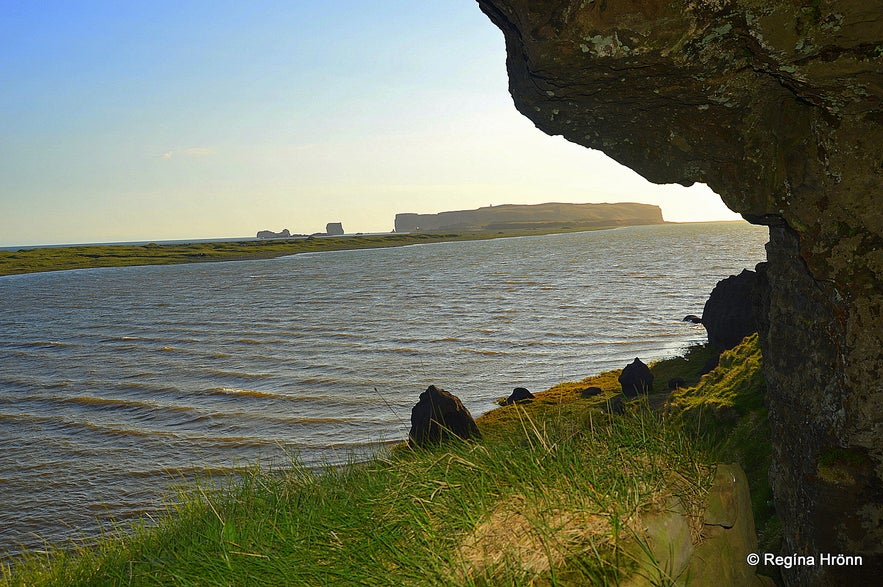
The view from Baðstofuhellir cave - the Cave of the Pastor of Fire - Cape Dyrhólaey in the distance
Here is the location of Reyniskirkja church on Google maps.
Please, stay safe while visiting Reynisfjara beach as it has got very dangerous sneaker waves and several people have lost their life here.
I have written another travel-blog about the dangers of Reynisfjara and Kirkjufjara beaches:
Extremely dangerous Waves by Reynisfjara and Kirkjufjara black Beaches in South Iceland!
Reynisfjara Black Sand Beach in S-Iceland – the One with the Basalt Columns
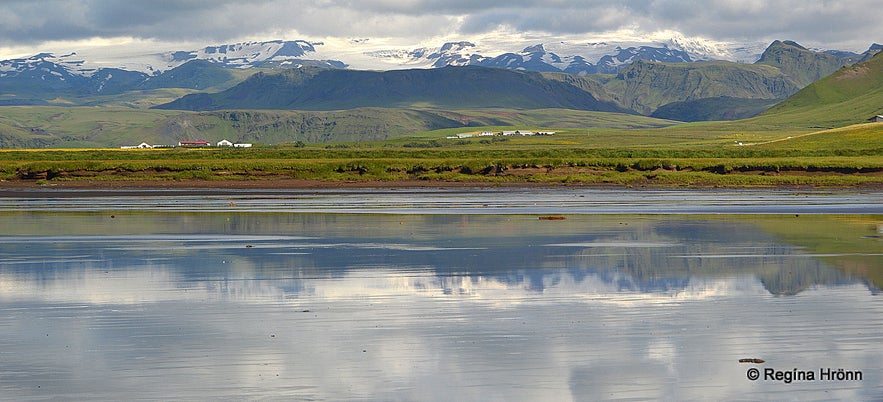
The Dyrhólaós estuary - don't miss visiting Dyrhólaey while in this area
If you want to read about more churches in Iceland, then I have written travel-blogs about a couple of them:
The Daughter of the Minister - Prestsdóttirin frá Prestbakka á Síðu - Icelandic Folklore
Dansinn í Hruna - The Dance in Hrunakirkja church upcountry in South Iceland - Icelandic Folklore
The beautiful Skinnastaðarkirkja Church in NE-Iceland - Icelandic Folklore
Víðimýrarkirkja Turf Church in North Iceland - is it the most beautiful of them all?
Have a lovely time in South Iceland :)
Sources:
Þjóðsögur Jóns Árnasonar
Otros blogs interesantes
Chasing Waterfalls in Iceland
Iceland is spectacular in so many ways and Icelandic nature is quite unique with its vast landscape, volcanic activity, geothermal areas, glacier lagoons and sceneries, black sand beaches and spectLeer másSænautasel Turf House in the Highland of Iceland
In my search for turf houses around Iceland, I visited Sænautasel, which is a rebuilt turf house on Jökuldalsheiði heath in the highland of Iceland. It is, in my opinion, an extremely cute turf hoLeer másThe Dynamic Plant Lupine
People have been asking me where to find lupines in Iceland. If you like them you should be able to find them easily in Iceland in summer. They are in bloom and visible almost wherever you drive aroLeer más

Descarga la mayor plataforma de viajes a Islandia en tu móvil para gestionar tu viaje al completo desde un solo sitio
Escanea este código QR con la cámara de tu móvil y pulsa en el enlace que aparece para añadir la mayor plataforma de viajes a Islandia a tu bolsillo. Indica tu número de teléfono o dirección de correo electrónico para recibir un SMS o correo electrónico con el enlace de descarga.
